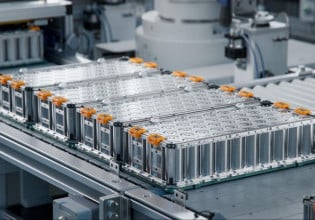2019 Heterogeneous Integration Roadmap Identifies Long-Term Technology Needs
The 2019 Heterogeneous Integration Roadmap (HIR) has been released. Designed to stimulate pre-competitive collaboration in order to advance heterogeneous integration technology development and accelerate electronics innovation, HIR provides a long-term vision for the electronics industry, identifying future technology requirements and potential solutions.
The HIR is sponsored by the IEEE Electronics Packaging Society (EPS), SEMI, the IEEE Electron Devices Society (EDS), the IEEE Photonics Society and The American Society of Mechanical Engineers (ASME EPPD Division). Stakeholders interested in contributing to the 2020 HIR can join the effort by visiting the roadmap’s member page. The 2019 edition of the Heterogeneous Integration Roadmap includes 22 chapters and can be downloaded. Chapters currently under peer review will be made available upon final approval.
The heterogeneous integration of wireless and mixed signal devices, bio-chips, power devices, optoelectronics and microelectromechanical systems in a single package places new requirements on the electronics industry as these diverse components are introduced into System-in-Package (SiP) architectures for the tremendous array of industries where electronics are used.
The HIR offers professionals, industry, academia and research institutes a comprehensive, strategic forecast of heterogeneous integration technology requirements to spur collaboration over the next 15 years. In addition, the HIR delivers a 25-year projection for heterogeneous integration of emerging devices and materials with longer research and development timelines.
"The broad industry support for the HIR is a clear mandate for us to stay ahead of the innovation curve and identify barriers that could slow the pace of growth in the electronics industry,” said Ajit Manocha, president and CEO of SEMI. “SEMI is firmly committed to support and connect the HIR with our members worldwide for long-term technology guidance and industry validation. HIR and other collaborations spanning the full supply chain are vital to identifying technology needs and ensuring the microelectronics industry thrives well into the future.”
“Today, we are seeing emerging technologies – such as AI, 5G, cloud, edge and data center, autonomous vehicles and wearable technology – that hold great promise for improving the lives of individuals across the globe,” said William Chen, chair of the Heterogeneous Integration Roadmap and ASE Fellow. “The HIR, with its broad input from industry and academia, represents an invaluable resource that sets the course for continued electronics industry growth, greater technology innovation and enhanced performance of devices across a wide variety of applications that can bring increased benefits to humanity.”
“When you consider the scope of the HIR, the numerous application domains it addresses, and the level of valued input from a wide range of global stakeholders, it’s clear that there is a strong commitment to advance the entire electronics ecosystem,” said Ravi Mahajan, Intel Fellow, High Density Interconnect Pathfinding, Intel Corporation, and IEEE, ASME Fellow. “Today’s innovators, as well as future technologists, are encouraged to leverage the extensive, informative guidance contained within the HIR and actively participate in its future evolution.”






